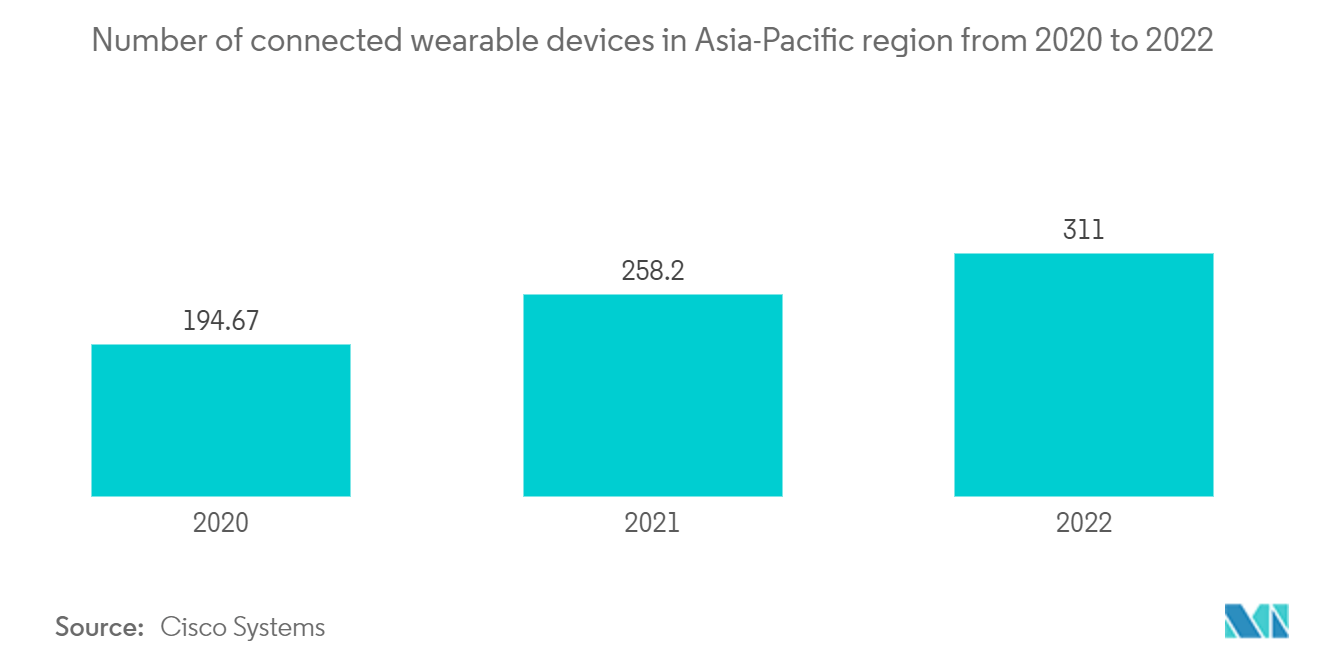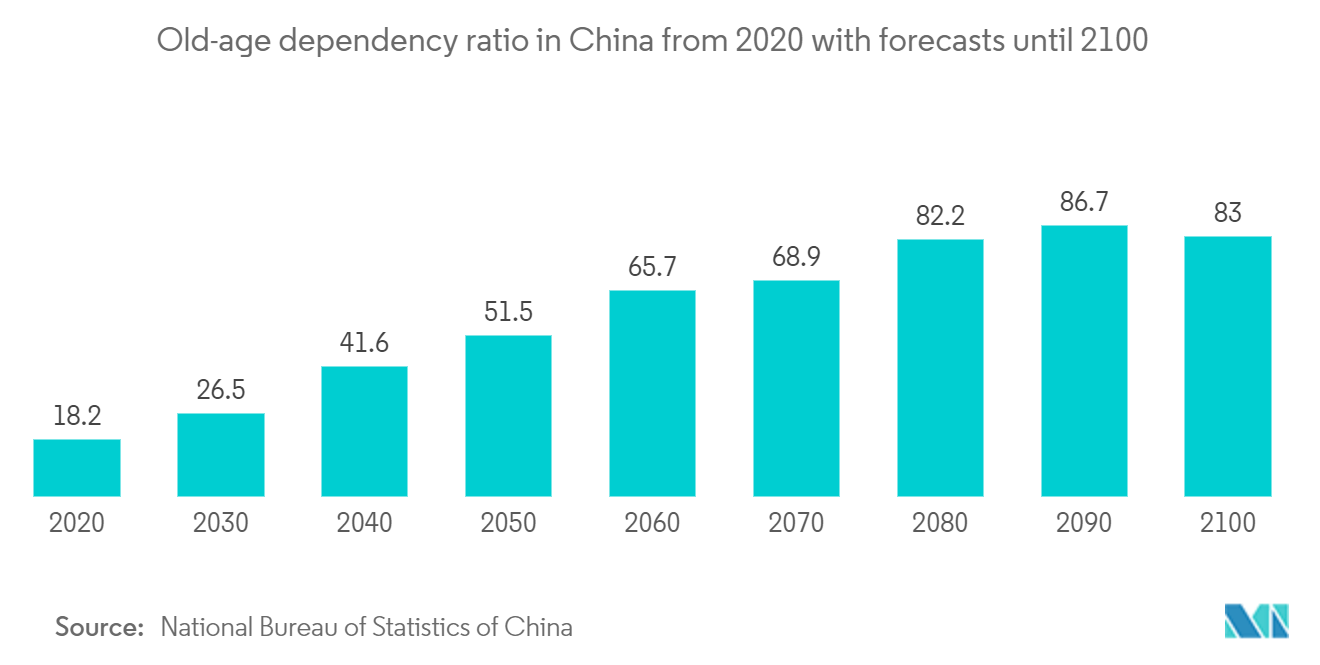Market Trends of Asia Pacific Healthcare IT Industry
This section covers the major market trends shaping the APAC Healthcare IT Market according to our research experts:
Patient Based Systems (Remote Healthcare, Wearables etc.) is Expected to Hold the Largest Market Share
- Wireless technology creates highly connected healthcare environments that can help hospitals address and monitor healthcare-related challenges. It is also playing a critical role in reshaping the future of healthcare for both patients and healthcare professionals. In the connected hospitals, connecting medical devices to EHR (Electronic Health Records) systems reduced the time it takes to enter the vitals from 7-10 minutes to less than 1 minute per patient.
- The adoption of remote healthcare and wearable devices in this sector has been gaining traction over recent times, which, in turn, has been one of the significant factors influencing the healthcare IT market. The major trends in wearable connected devices include increasing demand for pain management wearable devices, increasing use of wearables for cardiovascular disease management, and many others.
- Moreover, on account of advancements in healthcare technology, the growth of wearable devices with multiple biosensors monitoring several parameters witnessed a significant increase. These advances also enable the collecting, transferring, and storing of real-time data in the cloud, aiding healthcare professionals (HCPs) to predict and adjust precise and accurate drug dosage levels.
- Furthermore, the market is seeing various partnerships and collaborations from various key significant market players. For instance, in May last year, Tohoku University's Tohoku Medical Megabank Organization, pharmaceutical firms Daiichi Sankyo and Takeda Pharmaceutical Co., and medical IT company MICIN started a collaborative research project to track long-term lifestyle habits to drive the overall creation of new drugs. Over a year, they also intend to collect detailed and objective lifestyle data, such as sleep status, heart rate, and activity level.
- Per Cisco Systems, the wearables used in North America and Asia Pacific are forecast to account for around 70 percent of the wearable 5G connections worldwide in the last year. Hence, with the surge in the overall usage of wearables in the Asia-Pacific region, the Asia-Pacific Healthcare IT Market market is expected to witness significant growth opportunities throughout the forecast period.

China is Expected to Hold a Significant Market Share
- China plays a significant role in terms of augmenting the overall growth of the market significantly. The growing elderly population and rising life expectancy, increasing adoption of IoT-based medical devices, burgeoning healthcare expenditure, and accelerating demand for digital healthcare solutions due to COVID-19 are some of the major factors driving the healthcare IT market in the country.
- Government-led initiatives, such as "Internet + Healthcare" and state-level AI strategy, have accelerated the new-tech applications in China's medical sector. It is expected to continue further during the forecast period. During the COVID-19 pandemic, the Chinese government stepped up the "Internet + Healthcare" efforts to include telemedicine in state medical insurance coverage, lifted barriers for prescribed drugs sold online, and facilitated prescriptions shared to pharmacies by hospitals.
- Moreover, China faces challenges due to rapidly increasing medical demand and the shortage of healthcare resources. The application of telemedicine (i.e., remote clinical services), medical AI, and healthcare robotics has the potential to improve efficiency and clinical results, thereby creating a massive scope for growth for the market throughout the forecast period.
- In May last year, Telecommunications firm China Mobile Hong Kong, together with the health tech company Heals Healthcare, launched its mobile health app for teleconsultations in Hong Kong. The new app called Dr. HK, available on iOS and Android devices delivers a proper mix of offline and online health services, involving access to various electronic health records, video consultations, online outpatient clinic appointments, and medicine delivery. Moreover, on the app, the users can easily view the overall status of clinic queues and opening times in real-time to search for the health service most suitable for their various crucial needs.
- As per the National Bureau of Statistics of China, in 2020, the old-age dependency ratios in China ranged at around 18.2%, and it is forecasted that the overall ratio will rise to approximately 83% by 2100, indicating a steady rise in the coming decades. This will provide ample growth opportunities for the entire market to expand during the forecast period.

